What Are the Best Herbs for Anemia?
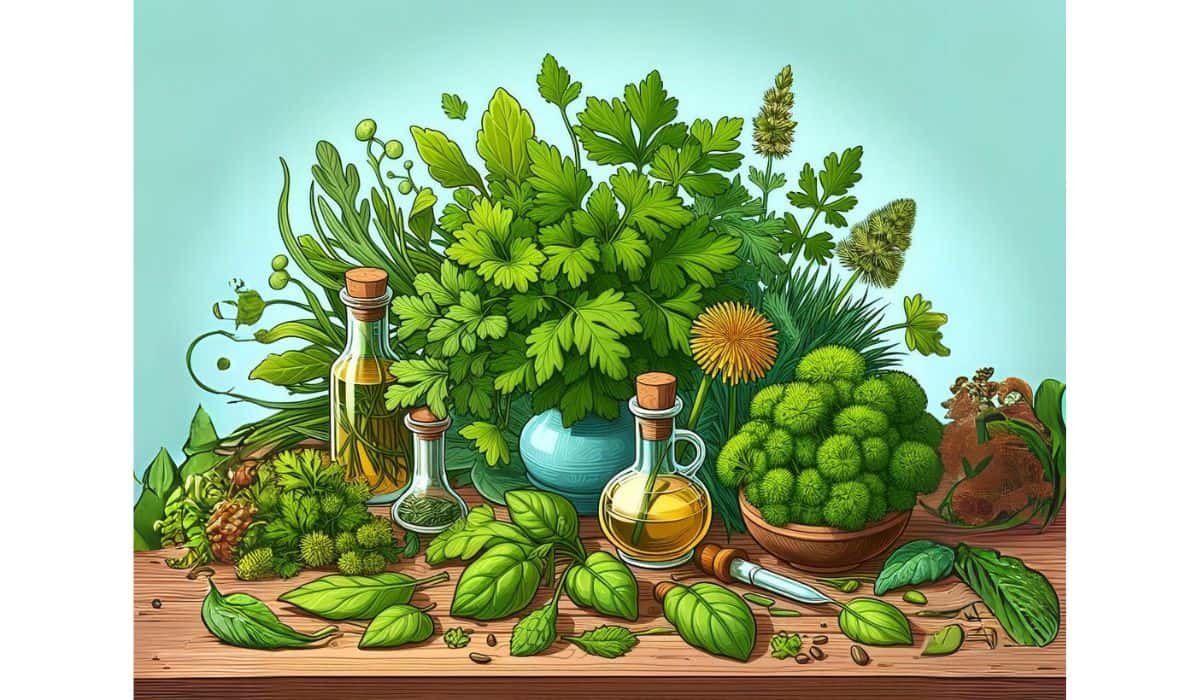
Did you know that around 24.8% of the world’s population is affected by anemia? [1]
If you’re one of the many who feel tired all the time, look pale, or get winded easily, you might be dealing with this common blood issue. Anemia can be a real hassle, making you feel like you’re running on empty. It’s tough when you want to be active, but your body just doesn’t seem to keep up.
You’re probably searching for ways to manage anemia and get your energy back. That’s why you’re here, right?
You might have tried some things already, like changing your diet or taking supplements, but you’re curious about what else could help. It’s not fun to always feel worn out, and it’s even worse when it feels like nothing you do makes a difference.
This article is going to talk about something you might not have considered yet: herbs. That’s right, some plants out there are known to be good for blood health. By the end of reading this, you’ll know which herbs might help you feel more like yourself again.
What is Anemia?
Anemia occurs when you have fewer red blood cells than normal or when these cells don’t contain enough hemoglobin, limiting oxygen transport in your body.
Symptoms can range from fatigue and weakness to irregular heartbeats and shortness of breath, depending on the severity and type of anemia you’re experiencing.
It’s essential to understand that anemia can be caused by a variety of factors, including nutritional deficiencies, inherited disorders, and chronic conditions.
Understanding Anemia Causes
Anemia happens when you don’t have enough red blood cells or they’re not working right. These cells are super important because they carry oxygen all over your body.
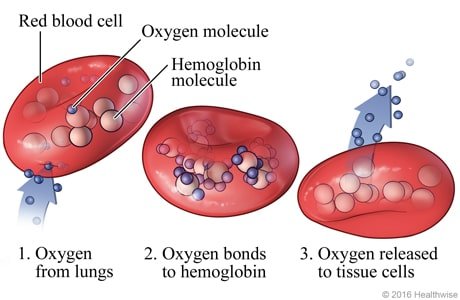
When it comes to why people get anemia, there are a bunch of reasons.
- Not getting enough iron, vitamin B12, or folic acid in your diet is a big one, because your body needs these to make red blood cells.
- If you’ve got a long-term illness, that can make it tough for your body to make enough red blood cells, too.
- Some people are born with conditions like sickle cell anemia or thalassemia, which mess up the hemoglobin in their blood – that’s the stuff in red blood cells that carries oxygen.
- Losing a lot of blood, whether all at once or over time, can lower your red blood cell count.
- Also, certain meds and toxins can harm your bone marrow, and that’s where your body makes red blood cells.
Anemia Symptoms
According to the American Society of Hematology there are many symptoms that can show that you have Anemia, with the most usual being:
- Feeling tired all the time: If you’re dealing with anemia, you might feel really tired all the time, and not the kind of tired that goes away after a good night’s sleep.
- Get out of breath: You could also get out of breath doing simple things like going up a flight of stairs, which means your body isn’t getting enough oxygen because you don’t have enough healthy red blood cells.
- Pale skin: Pay attention if your skin looks a lot paler than usual, especially under your nails, on the inside of your eyelids, or on your face. That could be because your blood isn’t flowing like it should.
- Fast beating heart: Your heart might also start beating really fast or hard, and that’s because it’s working overtime trying to move oxygen around your body.
If these things are happening to you, it’s a good idea to see a doctor to get checked out and find out what to do next.
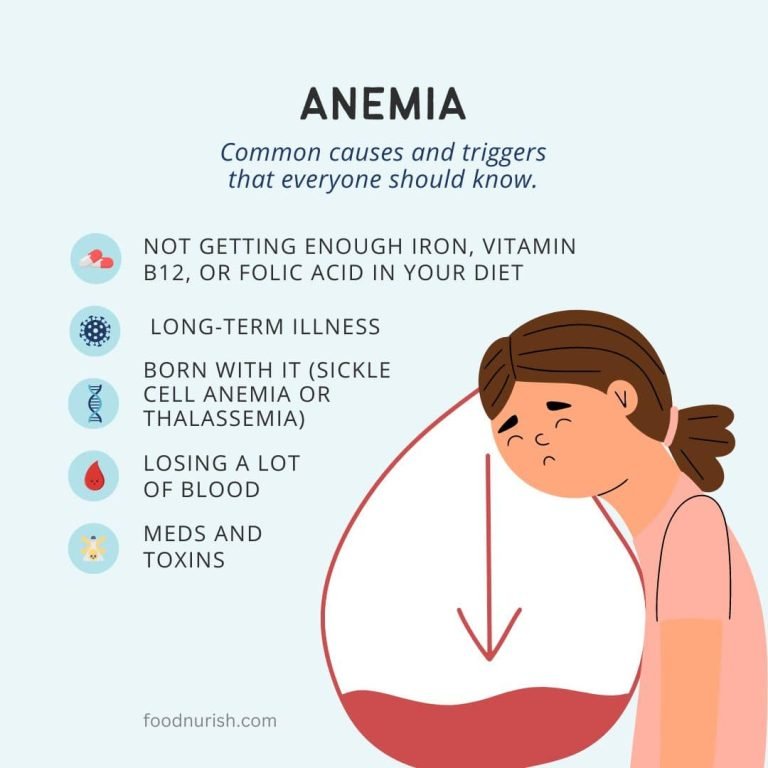
Anemia Types
There are many types of Anemia. Here are the 5 most-common:
- The most common type of Anemia is iron-deficiency anemia. This happens when you don’t have enough iron to make hemoglobin, which is what red blood cells need to carry oxygen.
- Another kind is vitamin-deficiency anemia, including pernicious anemia. This is when you’re not getting enough of the vitamins you need, like B12 and folate, to make red blood cells.
- Hemolytic anemia is when your red blood cells break apart faster than your body can make new ones.
- Aplastic anemia is when your bone marrow is hurt and can’t make enough new blood cells.
- Long-term illnesses, like kidney disease, can cause anemia too, which is called anemia of chronic disease.
What Are the Best Herbs for Anemia?
You’ll find that certain herbs can play a pivotal role in managing anemia by supporting blood production and enhancing iron absorption.
Here’s a table with the best herbs for anemia and a brief description of what each herb does:
| Herb | Description |
|---|---|
| Astragalus | May help stimulate red blood cell production by supporting bone marrow function. Contains components that might assist the body in making more blood cells. |
| Stinging Nettle | Rich in iron and vitamins A, C, and K, helping the body absorb and utilize iron effectively. Known for its anti-inflammatory properties, which can be beneficial for individuals dealing with anemia. |
| Spirulina | Packed with iron, vitamins B1, B2, and B9, aiding in the production of red blood cells and processing iron. Research suggests that the body can easily utilize the iron from spirulina, making it an effective option for addressing iron deficiency and anemia. Additionally, spirulina is a rich source of protein and includes compounds that protect red blood cells. |
| Dong Quai | Known as ‘female ginseng,’ contains cobalt that supports vitamin B12 production, essential for treating anemia. May stimulate bone marrow to produce more red blood cells and potentially improve blood flow. |
| Gui-Pi-Tang | A traditional Chinese herbal mix containing herbs like ginseng and astragalus, believed to promote the production of qi and blood. Studies suggest that these herbs may aid in the creation of new blood cells, beneficial for individuals dealing with anemia-related fatigue. |
| Yellow Dock | Contains components that help the body use iron more effectively. Rich in iron and minerals, it acts as a mild laxative, preventing constipation commonly associated with iron supplements. Additionally, yellow dock may support bile production, aiding in the breakdown and absorption of fats, essential for certain vitamins. |
| Dandelion | Nutrient-rich herb known for its potential to improve blood health. Contains vitamins A, C, and K, iron, and potassium, essential for red blood cell production. Compounds like sesquiterpene lactones may stimulate new blood cell production. |
| Alfalfa | Packed with iron, vitamin C, and B-vitamins like folate, necessary for making hemoglobin and red blood cells. Chlorophyll in alfalfa may contribute to fighting anemia, resembling hemoglobin’s structure. Research suggests that it can help refresh red blood cells. |
| Parsley | Rich in iron and folic acid, essential for healthy red blood cell formation. Contains chlorophyll, potentially aiding in blood cell production. Regular consumption can help with iron-deficiency anemia. It’s advisable to eat parsley fresh to retain vitamin C content. |
| Moringa | Nutrient-rich plant, particularly high in iron, vitamins A, and C. Supports iron absorption and red blood cell production. Research suggests that the iron in moringa is easily utilized by the body. May contribute to increased hemoglobin levels, improving oxygen-carrying capacity. |
1. Astragalus
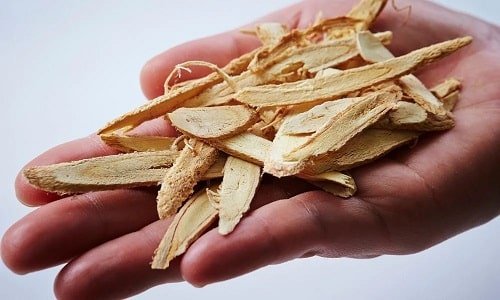
Astragalus is an old herb used in Chinese medicine that might help make more red blood cells. This could be good for people who’ve anemia, which happens when you don’t have enough healthy red blood cells. The plant, called Astragalus membranaceus, has stuff in it like sugar chains, soap-like substances, and plant pigments that might help the body make more blood cells.
Scientists think that astragalus could help the bone marrow, which is the place inside your bones that makes blood cells, to work better. This means your body could make red blood cells more easily. And since red blood cells need iron to carry oxygen, astragalus might help the body use iron better, too.
2. Stinging nettle (Urtica dioica)
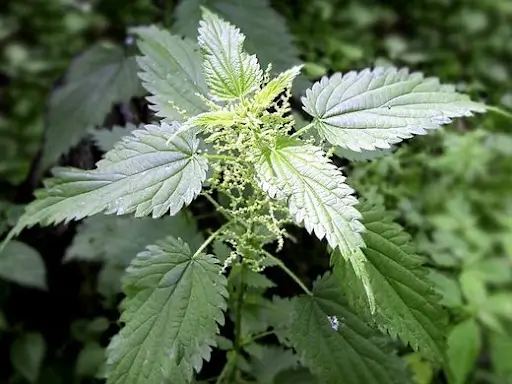
Stinging nettle, also known as Urtica dioica, is a plant that’s pretty good at helping your body hold on to more iron. This is great news if you have anemia and need a natural way to deal with it.
This plant is like a multi-vitamin – it’s full of vitamin A, C, and K, plus minerals like iron and calcium that you need for healthy blood. Studies have found that the iron in stinging nettle is easy for your body to take in and use. So when you eat it, you’re not just getting iron; your body is actually able to do something with it.
Studies show that stinging nettle doesn’t just give you more iron, it also helps your body take in iron better. This is thanks to vitamin C in the plant. Plus, it’s got B vitamins, like folate, which your body uses to make DNA in your red blood cells.
3. Spirulina
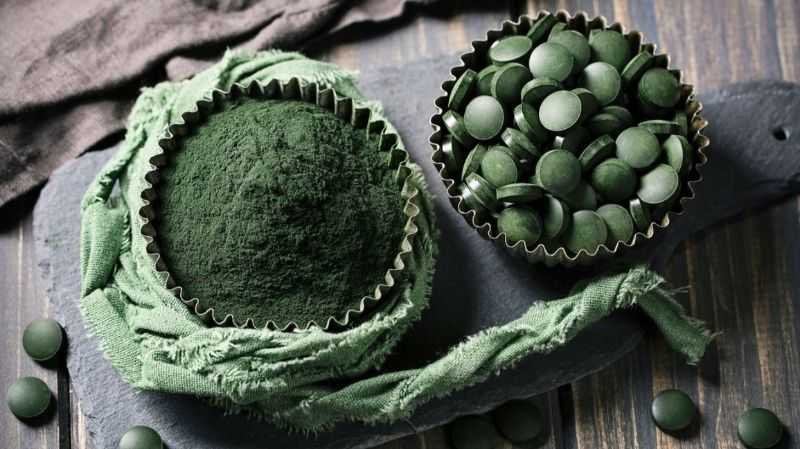
Stinging nettle can help your body take in more iron, but spirulina is even better for getting the iron you need, especially if you’re dealing with anemia. This blue-green algae is packed with iron and also has vitamins B1, B2, and B9, which your body uses to make red blood cells and process iron.
Research shows that your body can use spirulina’s iron more easily than iron from other plants. Eating spirulina can be a good way to tackle iron deficiency, which is the most common reason people get anemia.
Spirulina is also full of protein, which is good for fixing and growing new tissue. Plus, it has stuff in it that helps protect your red blood cells from getting damaged. Adding spirulina to what you eat can be a smart move to fight anemia well.
4. Dong quai (Angelica Sinensis)
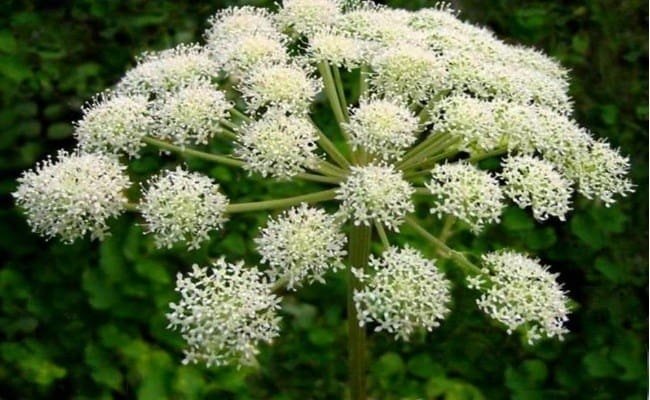
Dong quai is sometimes called ‘female ginseng’ because it’s used in traditional Chinese medicine to help with women’s health issues. This herb has stuff in it that might help treat anemia by helping make more hemoglobin and red blood cells.
The root has cobalt, which our bodies need to make vitamin B12, and that’s important for stopping and treating anemia. Studies show that dong quai might make the bone marrow create more red blood cells, which means there could be more hemoglobin in your body.
It also might help relax muscles and reduce swelling, which could make blood flow better and bring more nutrients and oxygen to where they’re needed.
5. Gui-Pi-Tang
If you’re looking into the traditional Chinese mix of herbs called Gui-Pi-Tang, it’s known for helping with anemia. This is because it has a bunch of different herbs like ginseng, astragalus, and jujube that work together to make you healthier.
People believe these herbs help make more qi and blood, which are really important in Chinese medicine for keeping you well.
Scientists have looked into it and think that these herbs can help your body make new blood cells.
This is good news if you have anemia, which makes you feel tired and weak because your blood can’t carry enough oxygen.
6. Yellow dock (Rumex crispus)
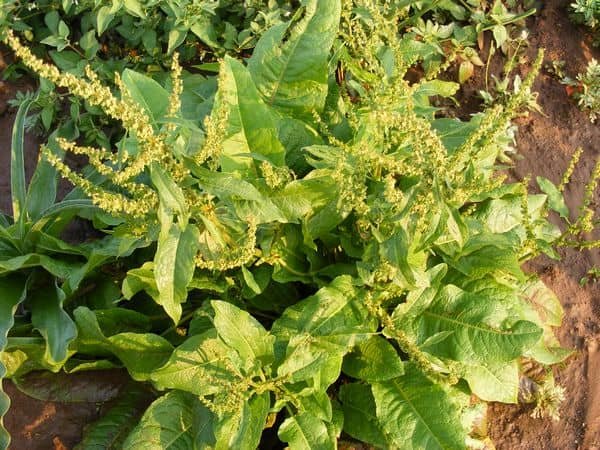
Yellow dock (Rumex crispus) mightn’t get a lot of attention, but it’s a really useful plant, especially for folks who’ve low iron and get tired easily because of it.
Research shows that yellow dock has stuff in it that helps your body use iron better. [2]
It’s got a root full of iron and minerals, and it’s also kind of like a mild laxative that can keep you from getting backed up, which sometimes happens when you take iron pills.
Plus, it’s thought to help your body make bile, which you need to break down and take in fats – and that’s important because some vitamins need fat to work well in your body. [3]
7. Dandelion (Taraxacum officinale)
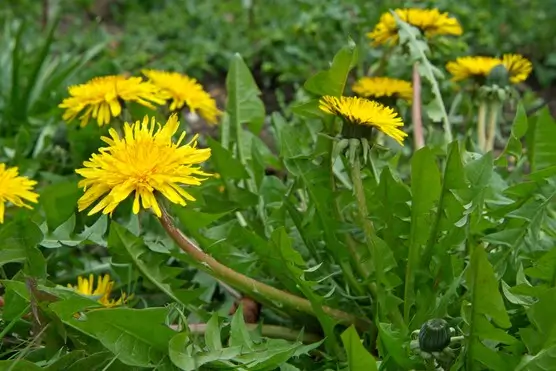
Dandelion leaves are particularly beneficial as they contain vitamins A, C, and K, as well as iron and potassium. These nutrients are essential for the production of red blood cells and preventing iron deficiency anemia.
Research suggests that dandelions contain compounds like sesquiterpene lactones, which may stimulate the production of new blood cells.
Additionally, the vitamin C present in dandelion enhances the absorption of iron from the food you consume. Incorporating dandelion into your diet, such as through fresh salads or tea, can be beneficial in managing anemia.
8. Alfalfa (Medicago sativa)
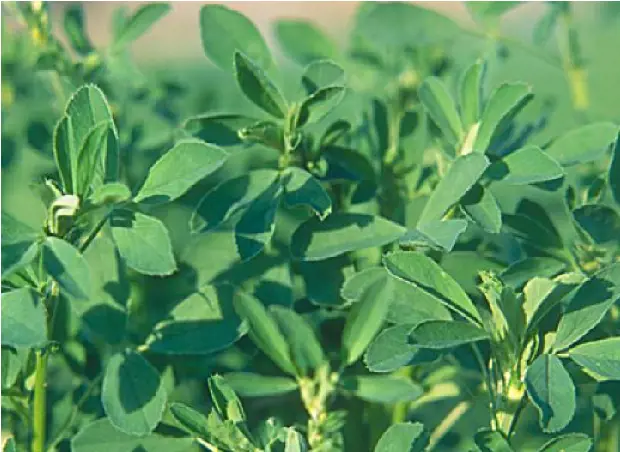
Alfalfa, also known as Medicago sativa, is a really good natural choice for people dealing with anemia. It’s packed with important vitamins and minerals that help keep your blood healthy.
Alfalfa has a lot of iron, which your body needs to make hemoglobin and carry oxygen around. It also has a good amount of vitamin C, which helps your body take in iron better, plus B-vitamins like folate that are necessary for making red blood cells.
Research suggests that the green stuff in alfalfa, called chlorophyll, might play a part in fighting anemia too. Chlorophyll looks a lot like hemoglobin and might help make and refresh red blood cells.
9. Parsley (Petroselinum crispum)
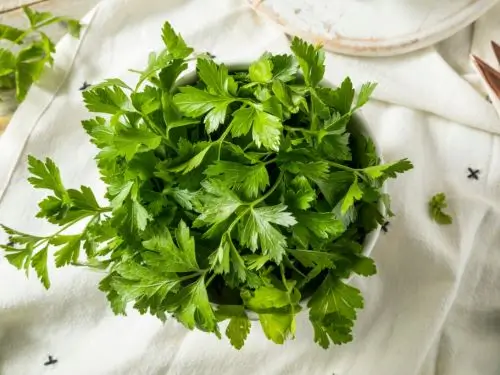
Parsley (Petroselinum crispum) is really good for fighting anemia because it’s full of iron and folic acid. These help make healthy red blood cells. Iron is important for making hemoglobin, which carries oxygen in your blood, and folic acid helps make DNA.
Eating parsley regularly can help with iron-deficiency anemia. This is the most common kind of anemia people get. Parsley has a lot of chlorophyll, which might help make more blood.
Plus, parsley has vitamin C, and that helps your body take in iron better. It’s best to eat parsley fresh, since cooking it can lower how much vitamin C it has.
10. Moringa (Moringa oleifera)
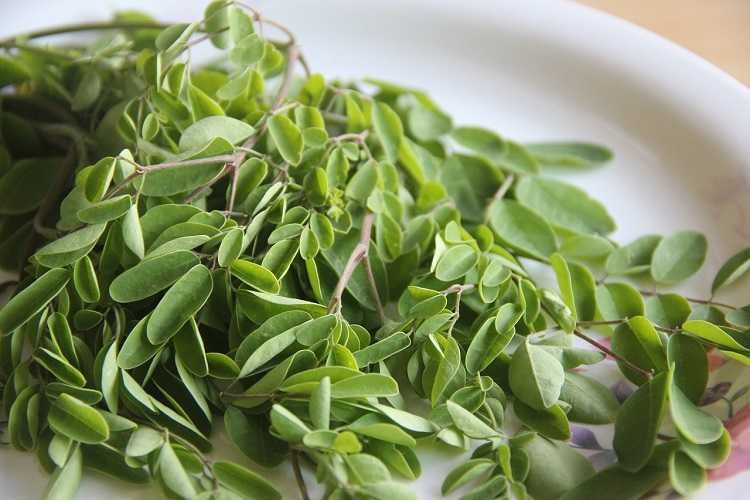
Moringa oleifera, or simply moringa, is a plant that’s really good for you because it’s full of nutrients. It’s especially rich in iron, which is important for people who’ve anemia, a condition where you don’t have enough healthy red blood cells.
It’s not only about the iron, though. Moringa has a lot of vitamins A and C, and these help your body take in the iron better and make more red blood cells.
Research shows that the iron in moringa leaves is the kind your body can use easily. If you eat moringa, it might help you have more hemoglobin, which carries oxygen in your blood. More oxygen in your blood means your body can work better.
Supplements for anemia
While herbs can offer natural support for managing anemia, you should also consider the role of specific supplements in your regimen.
Vitamin B12 (Cobalamin)
Vitamin B12 is a key nutrient that’s really important for making red blood cells and preventing anemia. Not having enough Vitamin B12 can cause a type of anemia where red blood cells are too big and not formed right, which makes it hard for them to carry oxygen.
If you’re vegan or vegetarian, you have to be careful to get enough B12 because it’s mostly found in these foods.
Vitamin B12 is also important for making DNA and keeping your nerves working right.
If you’re worried you mightn’t have enough B12, you can take supplements or eat foods that have B12 added to them to make sure you’re getting what you need.
Vitamin B2 (Riboflavin)
Vitamin B2, or riboflavin is really important for keeping our blood healthy. Riboflavin helps make red blood cells and gets energy from the proteins we eat.
It’s part of two key helpers in our body, called FMN and FAD, and these are super important for making hemoglobin.
If we don’t have enough riboflavin, we might get anemia, which means our blood doesn’t carry enough oxygen. It’s important to eat foods that have this vitamin or take a supplement if we need it. Our body can’t keep a supply of riboflavin, so we’ve to get it regularly.
Vitamin E
Vitamin E is really important for keeping red blood cells healthy. It acts like a shield, stopping the cells from being damaged by harmful things in the body called free radicals.
This is really good news for people with anemia because it helps stop their red blood cells from breaking apart too soon, which can make their anemia worse.
Some studies show that taking extra Vitamin E might help with certain types of anemia, especially the kind that happens when red blood cells break down too quickly because of these harmful free radicals.
But taking too much Vitamin E isn’t a good idea, because it can mess with how your body uses other vitamins that dissolve in fat, and that could be bad for your health.
This is why Vitamin E is mentioned as one of the 7 USELESS Vitamins & Supplements – according to Dr. Gundry
Iron
Iron is really important for making hemoglobin, which is the stuff in your red blood cells that carries oxygen around your body.
Taking iron pills can help get your iron levels back to normal, which can make your hemoglobin better and make you feel less tired if you’re anemic.
It’s a good idea to take these pills with something that has vitamin C in it because it helps your body take in the iron better. But don’t have them with stuff that’s got a lot of calcium, like some foods or drinks, because that can stop your body from getting the iron.
Copper
Copper is a key mineral that helps fight anemia because it helps your body use iron and keeps your red blood cells healthy. It helps make hemoglobin, which is the protein in red blood cells that carries oxygen all over your body.
If you don’t have enough copper, you mightn’t have enough hemoglobin, and this can make you feel tired and weak, like if you were low on iron.
Scientists have found that not getting enough copper can cause a type of anemia that looks a lot like the one caused by not having enough iron.
Copper is also important for keeping your heart healthy and your immune system working right. But you need to be careful not to take in too much copper because it can be harmful.
Most people get the copper they need from a normal diet, but sometimes a doctor might suggest taking extra copper.
Scientific Research on Herbs And Anemia
I went one step further and checked scientific databases for the keywords “Herbs and Anemia”. Here’s what I’ve found:
- A 2023 study published in the Journal of Diseases and Medicinal Plants investigated a recipe made from three plants—Xylopia aethiopica, Zanthoxylum leprieurii, and Harungara madagascariensis—known for treating sickle cell anemia in rats. The extracts from the plants were found to contain beneficial compounds like phenols, flavonoids, and tannins. When given to rats with induced anemia, the extracts effectively corrected the condition, increasing hemoglobin and red blood cell count.
- A 2020 study in Biodiversitas Journal explored the effectiveness of herbs (Curcuma xanthorrhiza, Elephantopus scaber L, Amaranthus tricolor L) versus iron supplements for Iron Deficiency Anemia (IDA). Among 128 subjects, those taking herbs showed improved quality of life (QOL) after 4 weeks, although no significant changes were seen in Hemoglobin, Serum Iron and Total Iron Binding Capacity. In the, iron supplement group, significant improvements were noted in Hemoglobin, Serum Iron and Total Iron Binding Capacity.
- A 2017 study in the African Journal of Pharmacy and Pharmacology focused on finding an alternative treatment for iron deficiency anemia in adolescent girls in India. They created a herbal extract using amla, pumpkin leaves, and jaggery syrup. When given daily for 60 days, the herbal extract significantly increased hemoglobin levels and physical work capacity.
- A 2018 article in the Taiwanese Journal of Obstetrics and Gynecology explored how Chinese herbal medicine (CHM) is used to treat anemia in Taiwan. Analyzing health data, the study found that older individuals, office workers, and those in central Taiwan tended to use CHM for anemia. Common combinations included Astragalus membranaceus and Gui-Pi-Tang.
- A 2020 article in the Bulletin of the National Nutrition Institution of the Arab Republic of Egypt explored the health benefits of Saffron, Ginger, and Cumin powder in improving iron absorption and treating anemia in rats. Rats fed on diets with these herbs showed increased levels of serum iron, hemoglobin, hematocrit, and ferritin. Liver function markers also improved.
- A 2021 research article in Frontiers in Pharmacology explored the use of Chinese herbal medicine (CHM) as a complementary therapy for Aplastic Anemia (AA) patients in Taiwan. CHM-users showed lower risks of overall and anemia-related mortalities compared to non-users. Notable CHM pairs included Ban-Zhi-Lian and Bai-Hua-She-She-Cao. Commonly used CHMs included Ban-Zhi-Lian, Bai-Hua-She-She-Cao, Dang-Gui, Huang-Qi, Xian-He-Cao, Gui-Pi-Tang, and Dan-Shen.
- A 2018 research article in the International Journal of Scientific and Research Publications studied the effectiveness of Saravallai dhal powder (SDP) from Trianthema portulacastrum Linn in improving iron levels in anemic adolescent girls in India. SDP, rich in nutrients like iron and calcium, significantly improved blood iron parameters after 90 days of supplementation. T. portulacastrum, known for anthelminthic activity, showcased potential as a cost-effective and side-effect-free remedy for anemia in adolescent girls.
Conclusion
While incorporating herbs like nettle leaf, dandelion, and yellow dock may help boost your iron levels naturally, it’s crucial to consult with a healthcare provider.
These herbs can complement your diet but aren’t a standalone cure.
Remember, supplements can be beneficial, but they should be tailored to your specific needs and taken under medical guidance to ensure safety and effectiveness in managing anemia.
Check this articles as well
